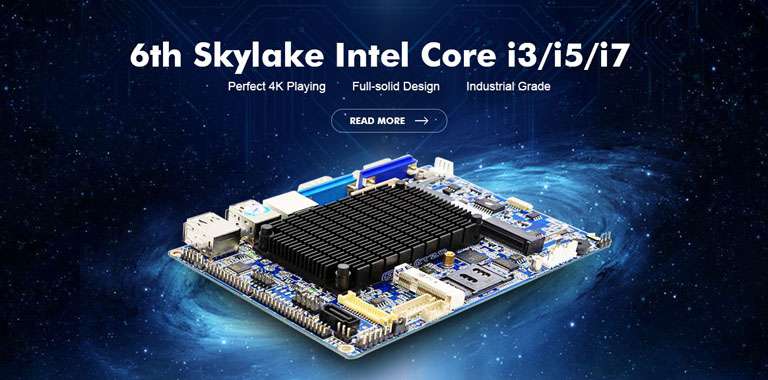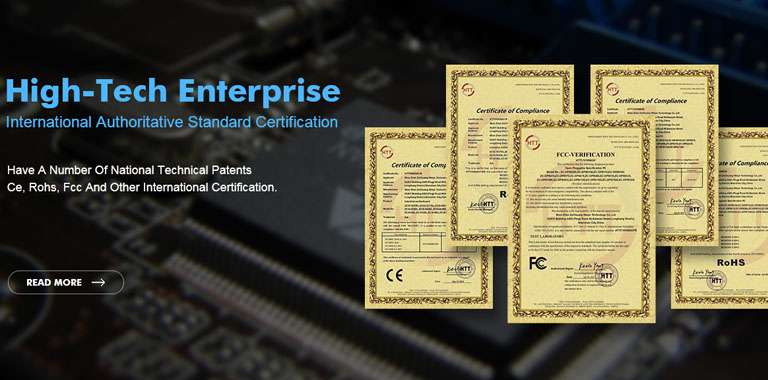The Rise of Compact Computing: Exploring Mini-ITX Motherboards Onboard J6412 CPUs
2025-02-20
The Rise of Compact Computing: Exploring Mini-ITX Motherboards Onboard J6412 CPUs
The relentless pursuit of smaller, more efficient computing solutions has led to significant advancements in motherboard design. Among these innovations, the Mini-ITX form factor stands out as a symbol of compact power, combining performance and space efficiency. When paired with modern low-power processors like the J6412 CPU, Mini-ITX motherboards unlock a world of possibilities for both enthusiasts and professionals. This article explores the synergy between the Mini-ITX platform and the J6412 processor, highlighting its applications, advantages, and the future of compact computing.
Understanding the J6412 CPU
The J6412 is a quad-core system-on-a-chip (SoC) designed for energy-efficient computing. Built on a hybrid architecture, it balances performance and power consumption, making it ideal for embedded systems, small-scale servers, and compact desktop builds. With a base clock speed of around 1.8 GHz and burst frequencies reaching up to 3.0 GHz, the processor handles multitasking and light computational workloads with ease. Its integrated GPU supports 4K resolution, enabling multimedia applications, while its thermal design power (TDP) of 10 watts ensures minimal heat generation.
The J6412’s strength lies in its versatility. It supports modern connectivity standards like USB 3.2, PCIe 3.0 lanes, and dual-channel DDR4 memory, allowing users to build systems tailored to specific needs—whether for home automation, digital signage, or portable workstations.
Mini-ITX: A Platform Built for Efficiency
Mini-ITX motherboards measure just 17 x 17 cm, yet they pack a surprising amount of functionality. Designed for small form factor (SFF) builds, these boards prioritize space optimization without sacrificing essential features. When combined with a low-power CPU like the J6412, Mini-ITX systems become remarkably efficient, consuming less energy and generating negligible noise compared to traditional desktop setups.
A typical Mini-ITX motherboard with the J6412 CPU includes onboard connectivity such as HDMI/DisplayPort outputs, Gigabit Ethernet, and M.2 slots for NVMe storage. Many also feature Wi-Fi and Bluetooth modules, reducing the need for external adapters. Despite their size, these boards often support up to 32GB of RAM, ensuring smooth operation for everyday tasks and light creative workloads.
Applications of J6412-Based Mini-ITX Systems
Home Theater PCs (HTPCs):
The J6412’s 4K video playback capabilities make it perfect for media centers. Paired with a Mini-ITX motherboard, users can build ultra-compact HTPCs that stream content, decode high-resolution videos, and integrate seamlessly with living room setups. The low power draw also means these systems can run 24/7 without significantly impacting energy bills.
Network Attached Storage (NAS):
Mini-ITX boards with the J6412 CPU are ideal for DIY NAS builds. With support for multiple SATA ports and RAID configurations, these systems offer reliable data storage solutions for homes and small offices. The processor’s efficiency ensures quiet, cool operation even in confined spaces.
Industrial and Embedded Systems:
The J6412’s reliability and low heat output make it suitable for industrial automation, kiosks, and digital signage. Mini-ITX motherboards can be integrated into rugged enclosures, providing durable computing solutions for factories, retail environments, or outdoor installations.
Portable Workstations:
For professionals needing a compact yet capable machine, a J6412-based Mini-ITX system can handle office tasks, light photo editing, and coding. Its small footprint allows for easy transportation, making it a favorite among remote workers and digital nomads.
Advantages of the J6412 and Mini-ITX Combo
Energy Efficiency:
The J6412’s 10W TDP, combined with the Mini-ITX platform’s optimized power delivery, results in systems that sip power rather than guzzle it. This efficiency reduces operational costs and environmental impact.
Space-Saving Design:
Mini-ITX builds occupy minimal desk or shelf space, making them ideal for cluttered environments or installations where size constraints are critical.
Silent Operation:
With no need for bulky cooling solutions, these systems often rely on passive or low-profile heatsinks, ensuring near-silent performance—a boon for noise-sensitive settings like recording studios or libraries.
Scalability:
Despite their size, many Mini-ITX motherboards offer expansion options via PCIe slots or USB ports, allowing users to add dedicated GPUs, storage, or networking cards if needed.
Challenges and Considerations
While J6412-based Mini-ITX systems excel in efficiency, they are not without limitations. The CPU’s performance ceiling makes it unsuitable for intensive tasks like video rendering or gaming. Additionally, the compact form factor limits upgradeability; users must carefully plan their builds to avoid compatibility issues. Thermal management, though less demanding than in larger systems, still requires thoughtful case design to prevent overheating in poorly ventilated environments.
The Future of Compact Computing
As technology continues to shrink, the demand for powerful yet tiny systems will grow. Processors like the J6412 represent a shift toward energy-conscious computing, aligning with global trends in sustainability. Meanwhile, Mini-ITX motherboards are evolving to support faster storage, higher-speed networking, and even modular components, ensuring their relevance in an increasingly mobile and IoT-driven world.
Conclusion
The combination of a J6412 CPU and a Mini-ITX motherboard exemplifies the potential of compact computing. By balancing performance, efficiency, and size, these systems cater to a diverse range of applications—from home entertainment to industrial automation. While they may not replace high-end desktops, they offer a compelling alternative for users prioritizing space savings and energy efficiency. As innovation in miniaturization continues, the J6412 and Mini-ITX platform will likely remain at the forefront of the SFF revolution, empowering users to think big while building small.
PREV: The Ubiquitous Role of Embedded Motherboards in Modern Techn...
NEXT: The Critical Requirements of Motherboards in Industrial Auto...




